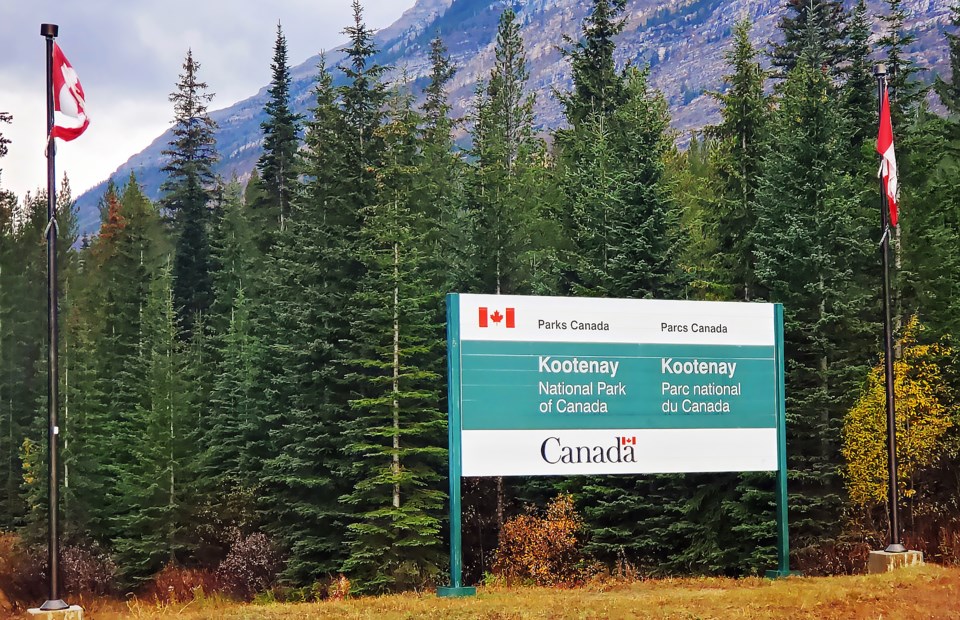KOOTENAY NATIONAL PARK – Parks Canada fire crews were quick to get a lightning-sparked wildfire under control and extinguished in Kootenay National Park.
The fire, which started near Dog Lake on Thursday night (May 29), was brought under control on Friday and extinguished on Saturday.
Parks Canada officials say an initial attack team assisted by a helicopter continued to work on extinguishing the fire, with a helicopter working in the area over a few days.
"An initial attack crew with assistance from a helicopter was able to extinguish the fire by May 31," said Kelsey Eade, fire communications officer for Lake Louise, Yoho and Kootenay field unit.
"The fire size was 0.25 hectares.".
The fire was reported on one of the emergency phones in the park to call dispatch by someone travelling Highway 93 South.
Park officals say early reporting can help fire personnel respond quickly when a wildfire occurs.
No additional wildfires have been detected in the Lake Louise, Yoho and Kootenay field unit.
Eade said that residents and visitors are reminded that everyone has a part to play in reducing the risk of wildfire.
"While we cannot avoid naturally occurring wildfires – lightning strikes – we can avoid human-caused fires," she said.
"Please do your part to keep our communities and first responders safe by not lighting illegal campfires."
Wildfire, illegal campfires or suspicious smoke can be reported to Parks Canada emergency dispatch at 403-762-4506.
Kootenay National Park
Over the past 20 years, fire has burned approximately 25 per cent of Kootenay National Park.
Lightning strikes start most of the wildfires in Kootenay National Park, including the prominent ones of the past 20 years such as the 2003 Tokumm-Verendrye blaze, the 2017 Verdant Creek fire, the 2018 Wardle Creek fire and the spring 2023 Mitchell Ridge fire.
Up until the early 2000s, there had been very little fire in the previous 80 years in Kootenay National Park, with the exception of the 1968 Vermilion fire that burned 1,500 hectares in Kootenay and 500 hectares in neighbouring Banff National Park.
But there were more historically based on direct evidence of fire, which can be found in scarred trees, burned stumps or logs, or charcoal in the duff layer of the soil.
Studies have shown that due to decades of fire suppression and climate change, the natural fire regime has been altered from a more frequent low to moderate fire regime in Kootenay National Park to less frequent but higher intensity fires.
For example, the 2003 Tokumm-Verendrye fire in Kootenay, which was dubbed “The Holy Shit” fire, burned approximately 16,000 hectares, 41 per cent resulting in high burn severity.
Kootenay National Park has very diverse temperature and precipitation ranges, with the southern end of the park getting significantly less precipitation than the north in Vermillion Valley and is also 2 Celsius to 6 Celsius warmer.
“This creates a longer fire season in the south of the park as snowmelt occurs in this area as early as March,” states Parks Canada’s 2020 integrated fire management plan.
“Temperatures and precipitation in the north of the park are similar to Banff as they near the Continental Divide.”
Kootenay National Park also sees a lot more lightning-sparked fires, largely influenced by the Continental Divide and lifting of air masses as low pressure systems track from British Columbia into Alberta.
According to Parks Canada’s integrated fire management plan, Kootenay National Park typically experiences the highest number of lightning-caused wildfires over Banff and Yoho, with 71 per cent of all fires sparked by lightning accounting for 90 per cent of the total area burned.




